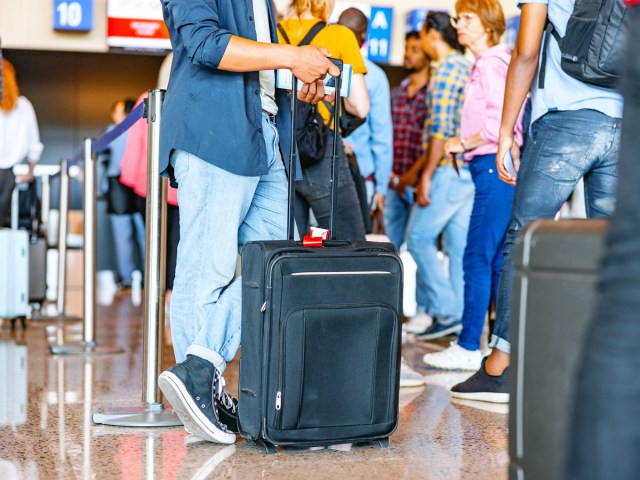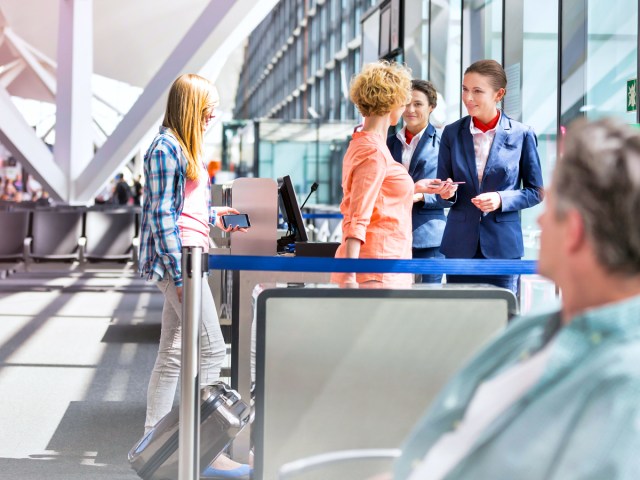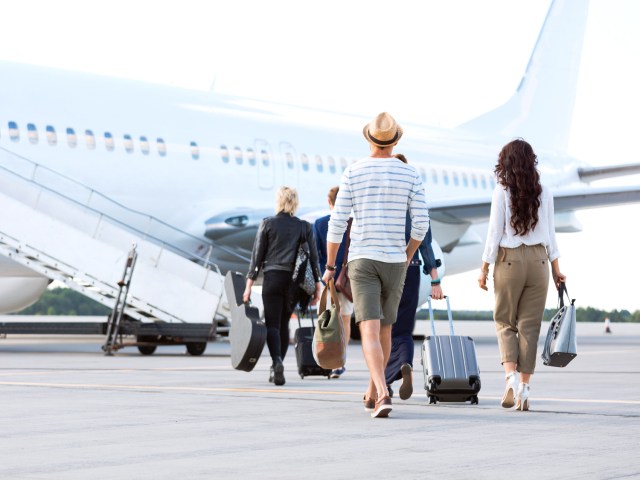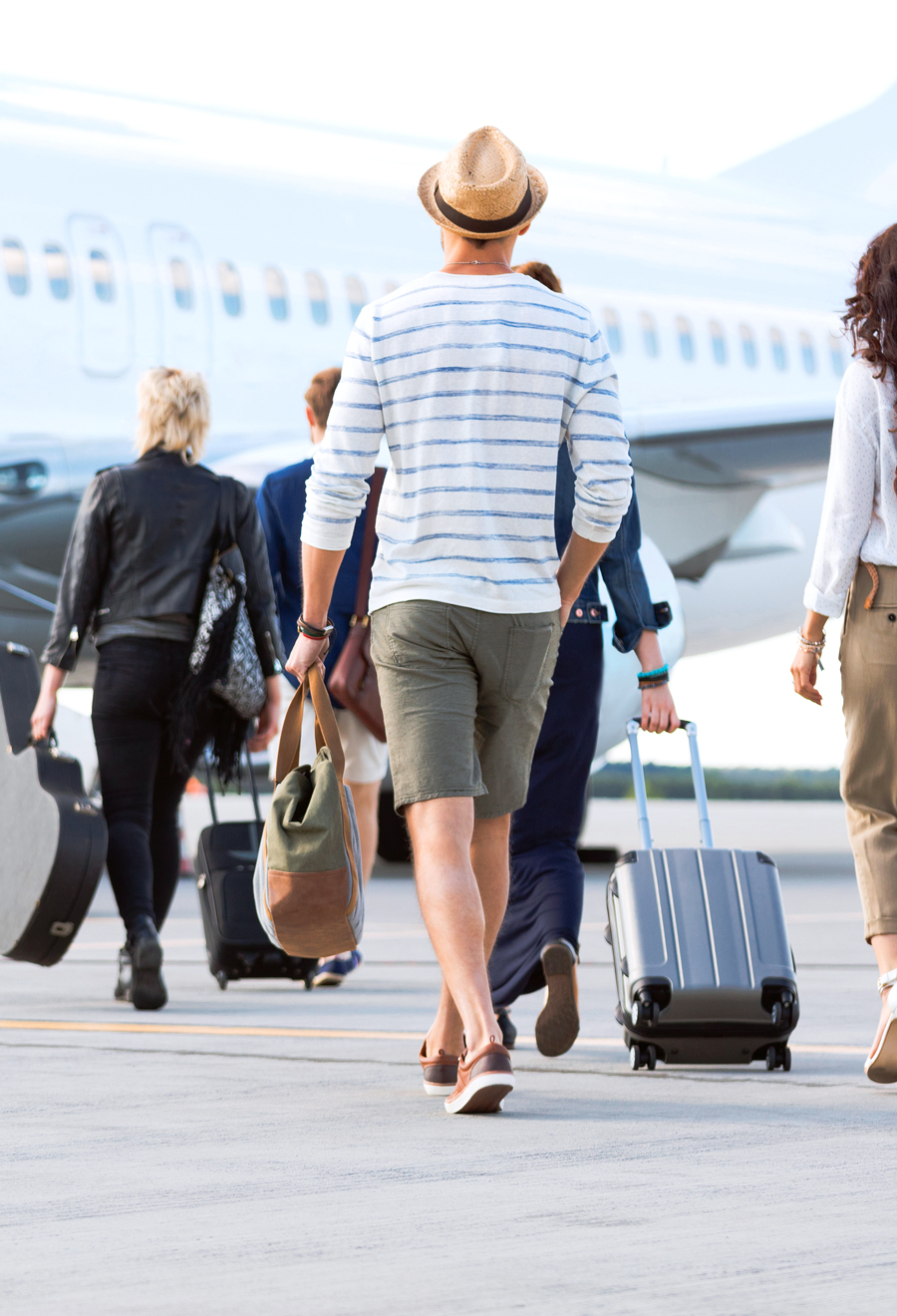You’d be forgiven for thinking you need an advanced degree to understand airplane boarding. In fact, even scientists have tried to crack the mystery of why boarding a plane can take so long. As airlines experiment with different methods, carriers have introduced processes so complex that they include as many as 10 different boarding groups — and even those in “Group 1” might find themselves boarding behind others. If you’re curious about this often-dreaded part of the air travel experience, take a closer look at how airlines determine how to board a plane.
The Science of Airplane Boarding

In the old days, as with many aspects of travel, boarding a plane was much simpler. Most often, airlines began boarding with first class, followed by a general call for the rest of the plane. However, as the industry has evolved, the process has become much more complex — particularly after the introduction of checked-bag fees in 2008.
As Massoud Bazargan, a professor at Embry-Riddle Aeronautical University, explained to CNN, “Airlines figured out they could make money off of bags. That killed any efficiency to do faster boarding.” As passengers look to avoid these fees, they tend to crowd the gate area, anxious to board quickly to find available space for their full-size carry-ons aboard the aircraft. Overhead bins fill up quickly and more bags need to be checked at the gate, which further slows down the process.
Scientists and travel advisory groups have long tried to tackle the issue of slow boarding. For example, astrophysicist Jason Steffen at the University of Nevada, Las Vegas, found in 2008 that boarding in groups sorted by every other row, starting from the back of the plane, could be four to 10 times more efficient than the standard process. In theory, this could help reduce logjams in the aisle as people store their luggage in overhead bins.
Airlines Prioritize Loyalty and Revenue

Airlines have a clear incentive to board planes quicker (less time on the ground equals more time flying paying passengers), so they have tried many boarding iterations over the years. Yet, no major airline has adopted Steffen’s method or even random boarding, which some studies have proved to be quicker. Why? An important reason is maximizing profits.
As travel expert Alex Miller, founder of the site Upgraded Points, tells AFAR Magazine, “The reason airlines have a lot of different boarding groups is because they want to segment out customers. Every so often airlines will simplify their boarding processes, but in the end, having a lot of different options to board recognizes loyalty and provides an opportunity for increased revenue.”
Rather than adopt the most efficient process, airlines choose to reward their biggest spenders with the opportunity to settle in sooner. That applies not just to those flying in first or business class, but also to members who have earned elite status within an airline’s loyalty program. On the opposite end of the spectrum are those who book basic economy — in exchange for a cheaper ticket, those customers usually board the plane at the very end of the process, no matter where they’re sitting.
Airlines have also recognized that some customers seated in economy class would gladly pay for the opportunity to board sooner, giving them a better chance of securing space for their carry-on luggage. While this provides another revenue stream for the airlines, it adds complexity to the boarding process. And finally, there are those who hold airline credit cards, many of which offer priority boarding as a perk.
Each Airline Is Different

Frequent travelers know that no two airlines are alike when it comes to boarding. In the U.S., however, airlines are required to allow any “passenger with a disability who self-identifies at the gate as needing additional time or assistance to board, stow accessibility equipment, or be seated, the opportunity to board before all other passengers,” according to the DOT. Airlines also allow for special zones dedicated to military personnel and families traveling with small children, but they don’t always board before the rest of the plane — exactly when they board differs by airline.
As for the rest of the passengers, here’s how the major U.S. airlines board their planes (accurate as of 2024):
Alaska Airlines: The Seattle-based carrier boards by lettered group. However, customers booked in first class and those with the highest level of elite status are in the “Priority Boarding” zone. Then, Groups A to F follow. Group D includes economy-class passengers seated in the back half of the airplane, while Group E includes those at the front of economy class, and Group F contains those who booked Alaska’s version of basic economy (called “Saver” fares).
American Airlines: The world’s largest airline by passengers carried, American has nine numbered boarding groups, plus a dedicated early boarding zone for ConciergeKey members, the airline’s highest status tier. Group 1 includes those in first class, along with active military members and the next status tier. At the end of the process is Group 9, which includes customers booked in basic economy.
Delta Air Lines: The Atlanta-based airline has eight boarding zones, though, like American, the highest status holders (Delta360) can board before these zones begin. Delta’s extra-legroom section, called Comfort+, boards with Zone 3, while the rest of economy class is split between Zones 6 to 8.
Frontier Airlines: Budget carrier Frontier Airlines begins with a zone called “Board First,” available to top-tier elite members and those who purchase a carry-on bag. The process continues with Zone 1, followed by family boarding and Zone 2, which anyone can purchase. Zones 3 to 5 are boarded from the back of the aircraft forward.
JetBlue Airways: New York City-based JetBlue Airways boards by lettered groups, though passengers in its premium cabin (called “Mint”) and elite members are allowed to board first, followed by Groups A to F.
Spirit Airlines: Similar to low-cost rival Frontier, Spirit Airlines uses a numbered zone system. If you purchase a carry-on bag, you can jump ahead to Zone 1, followed by those who purchased priority boarding and elite members in Zone 2, families, and general boarding in Zones 3 and 4.
Southwest Airlines: Since its founding in 1967, Southwest has been known for its open-seating policy, which doesn’t allow for advance seat assignments. Instead, passengers are assigned a number in three boarding groups (A, followed by B and then C) based on their time of check-in. For example, if you check in on the later side, you might end up with position C37. (Elite members and those who purchase upgraded boarding can automatically receive a better boarding number.) Once onboard, passengers can choose any open seat. However, Southwest announced in 2024 that it will be discontinuing this policy in favor of assigned seating.
United Airlines: Finally, United Airlines has six boarding groups. Members of its highest frequent flyer tier are invited to preboard with families and active military members. For economy class, the airline introduced a new process in 2024 based on seating position — Group 3 is for window seats, Group 4 is for middle seats, and Group 5 is for aisle seats. (Basic economy boards last in Group 6.) The airline claims that this process, dubbed “WILMA” (which stands for window, middle, aisle), saves them an average of two minutes per flight.
More from our network
Daily Passport is part of Inbox Studio, which publishes content that uplifts, informs, and inspires.
















